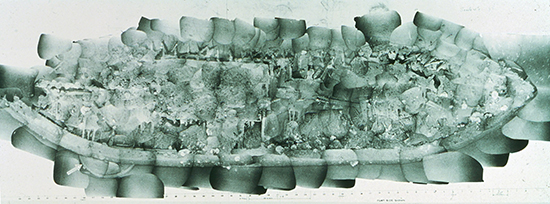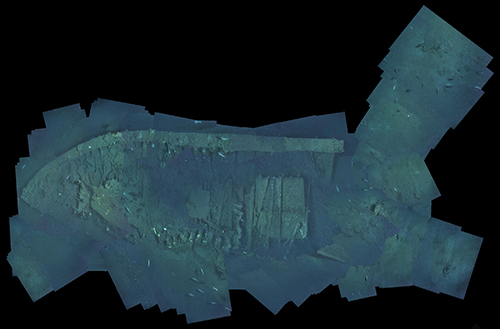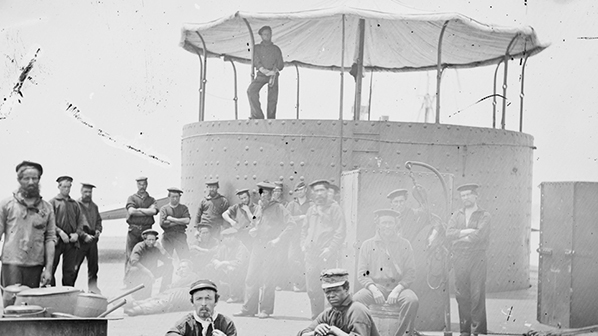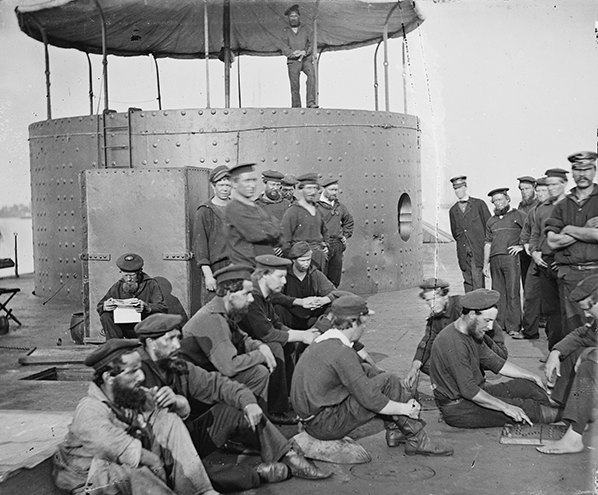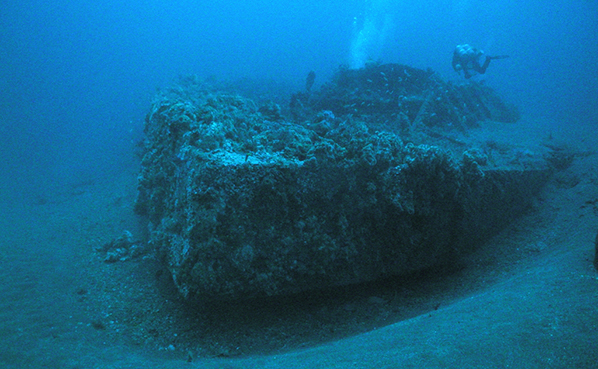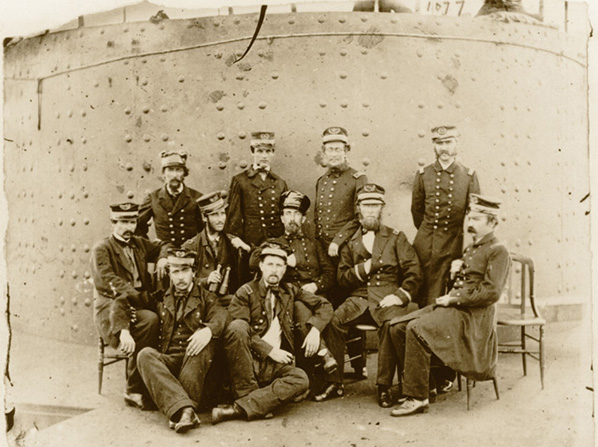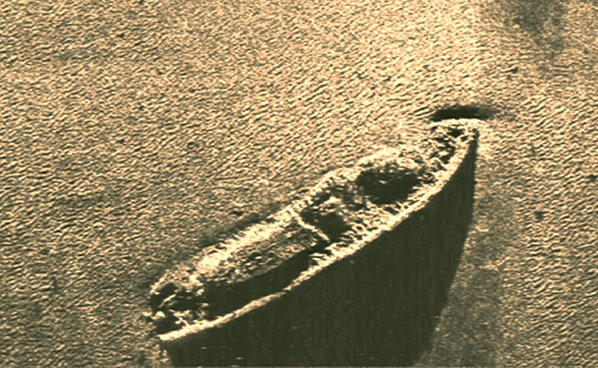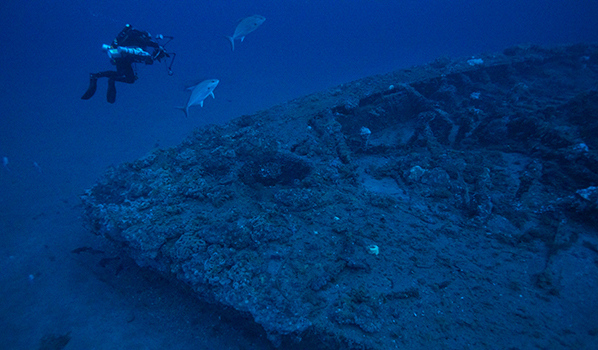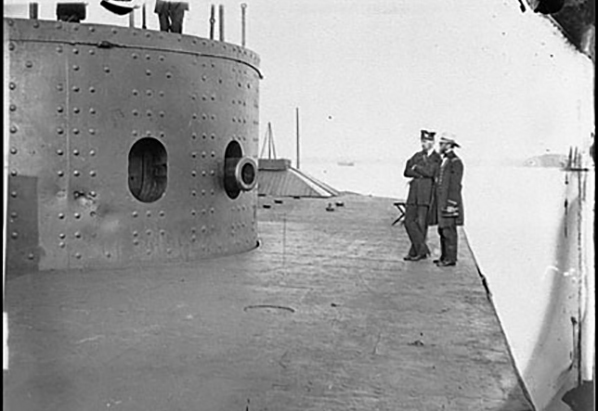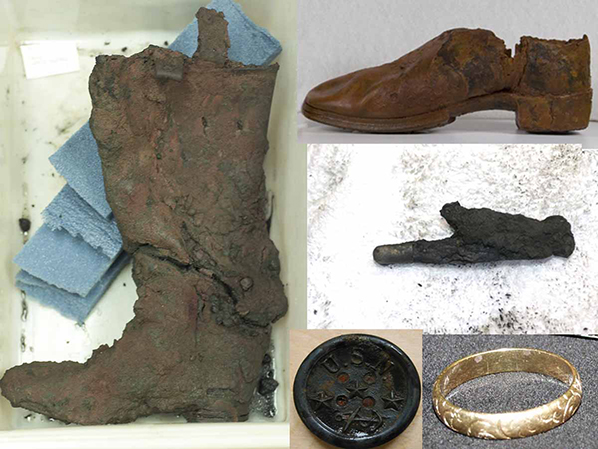USS Monitor
Dive 230 feet below the Atlantic Ocean off the North Carolina coast on one of our nation’s most historic shipwrecks, USS Monitor. This Civil War ironclad sank in 1862, and in 1975, it became the first national marine sanctuary – Monitor National Marine Sanctuary. Transformed from a weapon of war to an island of marine life, Monitor continues to serve as habitat for a wealth of marine life. Dive in to see sand tiger sharks, sea turtles, and more!
If you're on a desktop, click and drag to experience in 360 degrees, or pair your phone with your virtual reality headset. For the best viewing experience, watch the video in high-definition: click the gear symbol in the lower right corner, then select any of the HD options that pop up when you click "Quality."
Ship Stats
Location: 35°0'7.02"N, 75°24'22.79W (35.00195 -75.40633)
Depth: 240 feet
Vessel Type: Ironclad
Length: 173 feet Breadth: 41 feet 6 inches
Gross Tonnage: 987
Built: 1862, John Ericsson at Continental Ironworks in Greenpoint, Brooklyn, N.Y.
Hull Number: N/A
Port of Registry: USA Owner: U.S. Navy
Lloyd's Register Details: N/A
Former Names: N/A
Date Lost: December 31, 1862
Sunk: In a storm off Cape Hatteras, N.C. Survivors: 46 of 62 survived (16 dead)
Data Collected on Site: Still and video photography; photomosaics; site plan; photogrammetric model; listed on the National Register of Historic Places (10/11/1974); listed as a National Historic Landmark (6/23/1986)
Significance: Union's first ironclad; fought in the Battle of Hampton Roads; became our nation's first national marine sanctuary
U-boat lost off the U.S. East Coast during the war.Historical Background
A Revolutionary Vessel
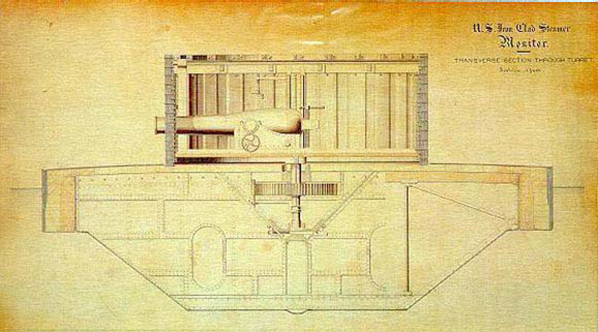
During the Civil War, the idea of the USS Monitor was born amidst a nation in turmoil. After discovering the Confederate Navy was constructing an impenetrable ironclad in Hampton Roads, Va., President Lincoln called for a naval board to propose construction of an ironclad vessel to lead the Union Navy. John Ericsson, a Swedish-American inventor, introduced a plan, which caught their attention. Complete with a rotating gun turret, low draft, sleek profile and Ericsson's claim as an "Impregnable Battery," the board was convinced to order swift production on what would become the USS Monitor. Construction immediately began at the Continental Ironworks in Greenpoint, Brooklyn, N.Y. Almost 100 days later, on January 30, 1862, the USS Monitor was launched into the East River.

Battle of Hampton Roads
The Union's biggest threat lived in Hampton Roads. The Confederate Navy had a stronghold on Norfolk, Va., and they had also constructed an ironclad, the CSS Virginia. On March 8, 1862, the Virginia sailed into the harbor and engaged the Union fleet inflicting major damage before retiring for the day. The next morning, CSS Virginia confidently prowled into the waters for more takings, but imagine the crew's surprise when they saw the unfamiliar outline of the Monitor in the distance.
On March 9, 1862, the first time iron met iron, the two warships fired upon each other for hours, each side looking for their opponent's weaknesses. Almost four hours into the battle, a shot from the Virginia exploded against the Monitor's pilot house and Captain Worden was temporarily blinded. The Monitor's Executive Officer, Samuel Dana Green, assumed command and ordered the Monitor into shallow water, where the Virginia could not follow, to assess the captain's wounds and damage to the ship. The Virginia's captain, assuming the Monitor was withdrawing from battle, withdrew in supposed victory. When the Monitor returned to resume the engagement and found the Virginia gone, her crew also assumed victory.
In reality, the battle was a virtual draw with neither vessel inflicting serious damage to the other. Although the Monitor remained in Hampton Roads throughout the spring and summer of 1862, the two vessels never again met in battle. Regardless of a decisive victor never dissolving in the match between the two ironclads, one outcome was distinctly clear: the era of the wooden warship was at an end and from that day forth, iron would forever rule the seas.
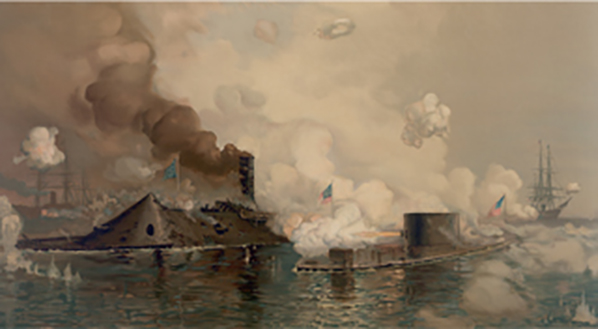
The Monitor is No More
Following the seizure of Norfolk by the Union forces, the strength and power of the Monitor and her now famous Ericsson turret was needed further south. On December 29, 1862, she left Hampton Roads, along with the aid of a tug, the side-wheeler frigate USS Rhode Island. All was well until New Year's Eve when they were off the coast of Cape Hatteras, N.C. The waves grew and the wind howled. With each pitch and roll, shock waves ravaged the crew and the hull of the little ship. Leaks developed, flooding the engines and reducing steam pressure needed for propulsion. The crew tried using pumps and even bailing with buckets, but the distress was too great. The "Monitor Boys" raised the signal of distress, a red lantern, and the Rhode Island deployed their lifeboats in an effort to rescue the crew. The turret was the only escape hatch from below and as the men attempted dashing across the deck many of them were swept into the unknown by the treacherous waves. In the end, 16 of the brave men onboard the Monitor never met the year of 1863.
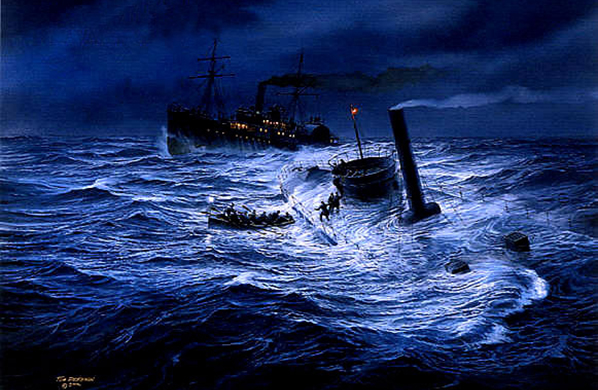
Discovery and Designation
It all began in 1973, when a team of scientists aboard Duke University Research Vessel Eastward located the shipwreck remains of what they believed to be the USS Monitor lying upside down in 230 feet of water, approximately 16 miles off Cape Hatteras, N.C. A 1974 expedition confirmed that the shipwreck was in fact the Monitor.
After the discovery, government officials faced the challenge of finding an applicable law to protect the resource before further irreparable damage could occur. While some proposed creating a new law specific to the Monitor, Congressman Jones, Sr., of North Carolina's Outer Banks, recommended the use of the recently passed National Marine Sanctuary Act (NMSA was enacted as Title III of the Marine Protection, Research, and Sanctuaries Act of 1972).
The sanctuary was designated on January 30, 1975, being the first sanctuary created under the NMSA. In many ways, the designation set the tone for the future of the NMSA, both in its recognition of the importance of our maritime heritage and in its emergence as a way to protect the nation's underwater treasures.

Expeditions and Conservation
Since the late 1970s, many expeditions to the Monitor have been made and they yielded an amazing variety of artifacts. In 1996, NOAA was given a mandate by Congress to develop a plan to preserve the Monitor. Therefore, in 1998, NOAA released a long-range plan that outlined a six-step proposal for stabilizing portions of the Monitor's hull and recovering the vessel's steam engine and rotating gun turret.
Salt, mud and time have taken their toll on the iron artifacts of the USS Monitor. In 2007, the Batten Conservation Laboratory Complex at The Mariners' Museum opened. This state-of-the-art facility houses thousands of small and large Monitor artifacts in an environment where scientists can study the corrosion process and preserve components of the shipwreck.
For more information about the USS Monitor, visit both these website: Monitor National Marine Sanctuary and USS Monitor: Preserving a Legacy.
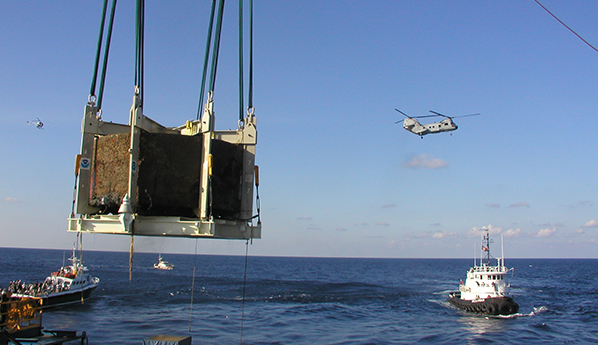
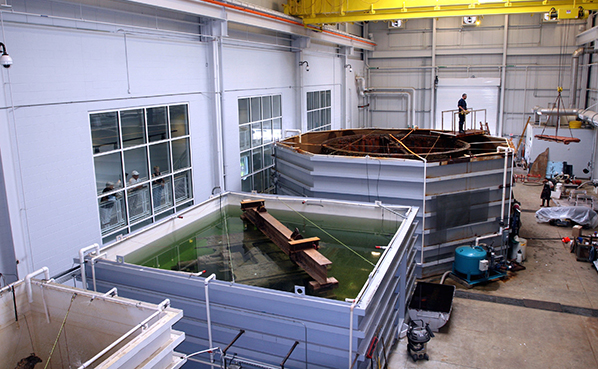
Video: "The USS Monitor and NOAA: A Look Through Time"
Video: "The History of the USS Monitor"
3-D Model
Photomosaics
